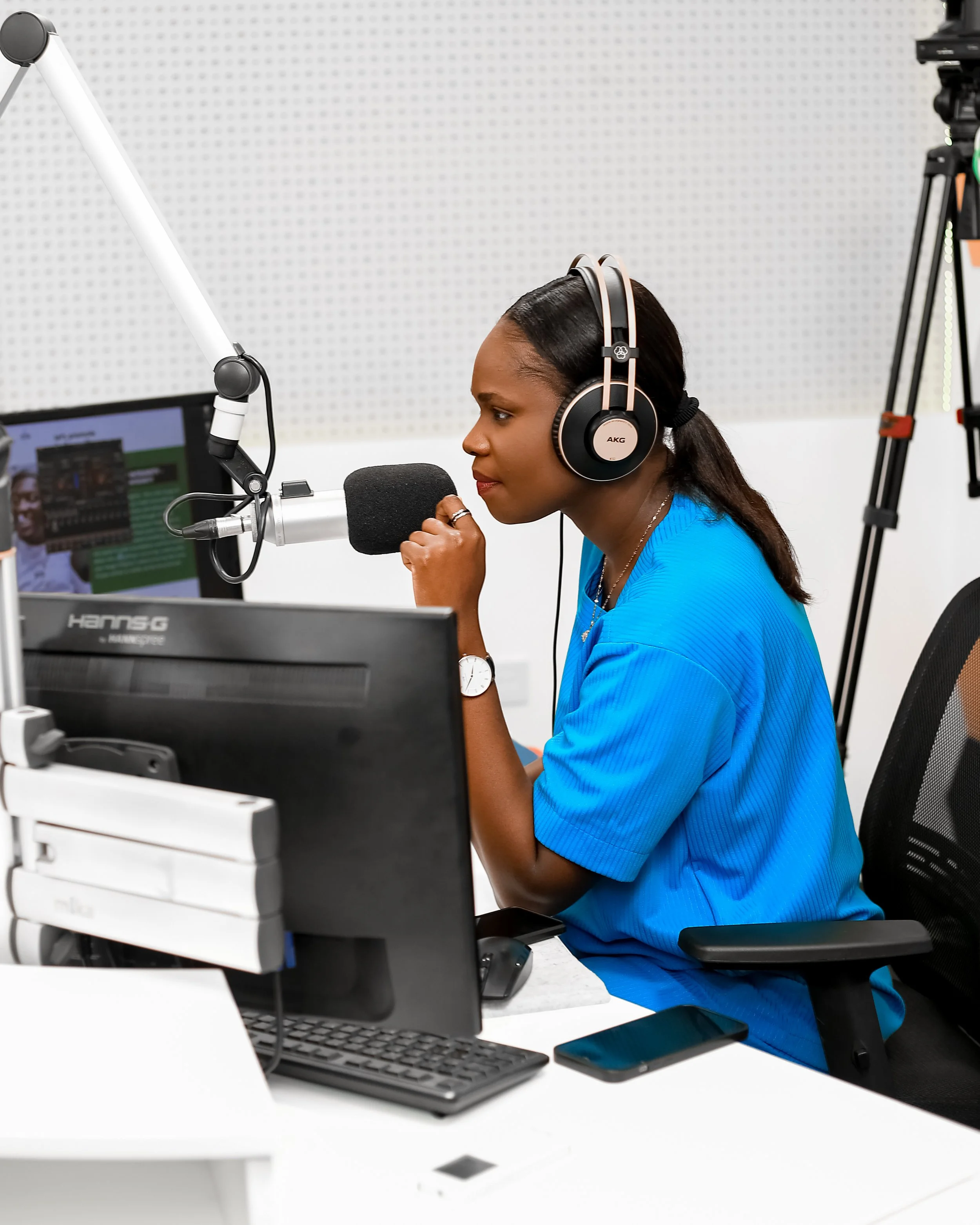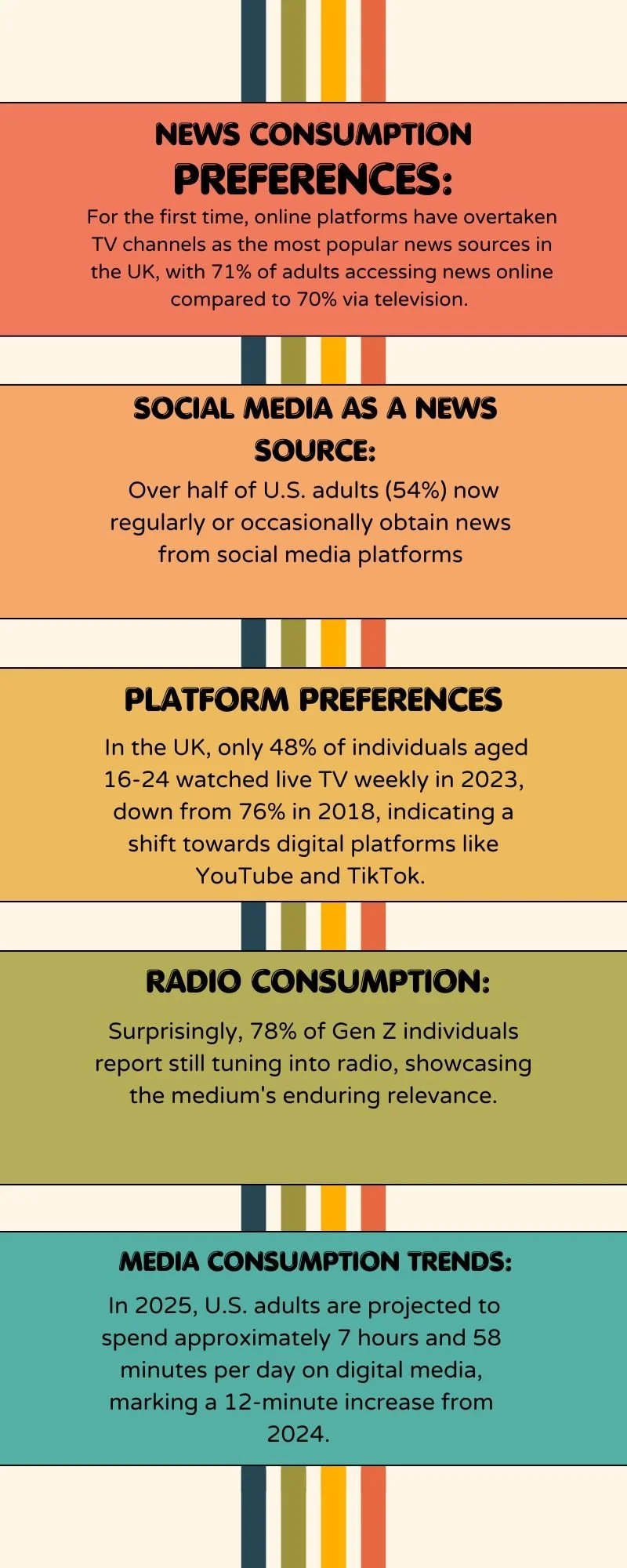Journalism in the TikTok Era: Why Adaptability Matters More Than Ever
Capturing the essence of storytelling through sound. In a world that scrolls fast, radio remains a powerful, intimate medium where voices carry depth and stories find a soul. Whether it's news, culture, or conversations that matter, this is where connection begins.
#RadioLife #MediaInAction #VoiceOfThePeople #BroadcastJournalism #DelaMichel
“Clickbait may win attention, but trust and authenticity win loyalty.”
Journalism has always played a crucial role in shaping society — often called the eyes, ears, and conscience of the people. Back in the day, we proudly called ourselves the “Voice of the Voiceless.” But in today’s hyper-digital world, the way we share and consume news has taken on an entirely new life.
As someone who started out in traditional broadcast journalism and now runs a digital-first media space, I’ve lived through this transformation. And let me tell you it’s fast, exciting, and constantly evolving.
When 6 PM News Was a Big Deal
There was a time when the 6 PM news was a sacred family ritual. Meals were timed perfectly so dads wouldn’t miss the headlines, and heated conversations would spark over major news stories. As a child, I sat and watched the anchors with wide eyes, unknowingly nurturing a love for the newsroom.
Remember when the streets of Accra were lined with newspaper stands, the bold fonts screaming at passersby to grab a copy? Reading the paper was a flex — especially the "old-school" way with a cup of tea and some commentary on the side. That world hasn’t completely disappeared, but it’s certainly changed.
From Anchors to Algorithms
Today, the news breaks by the second. TikTok, Instagram, and X (formerly Twitter) have become go-to sources for millions. But with that speed comes the risk of misinformation spreading just as quickly if not faster than verified facts.
As journalists, we’ve had to evolve. It’s no longer enough to simply report. We now need to verify, contextualize, and break down complex issues all in under 60 seconds if we want to keep people watching. Sure, some platforms support long-form content, but let’s be real: the audience wants it short, clear, and impactful.
On my TikTok page, I’ve seen comments like, “I like how you deliver the news. Straightforward. No long talks.” That’s validation. That’s proof that clarity cuts through the noise and people are listening.
“Traditional vs. Digital Journalism: Key Differences”
The Rise of the All-In-One Journalist
Gone are the days when reporters could stick to one role. Today, you have to wear many hats: reporter, content creator, video editor, SEO strategist, and sometimes even your own fact-checker. Journalism now happens wherever your audience is be it TV, a podcast, YouTube, or even WhatsApp broadcasts.
Running a digital media space alongside traditional media has pushed me to evolve from an anchor into a full-on digital storyteller. From curating headlines to tracking content performance it’s intense but incredibly fulfilling.
“Innovation is the lifeblood of journalism. Without it, we risk becoming irrelevant in a rapidly changing world.”
One of the biggest challenges in digital journalism? Staying authentic. The temptation to chase clicks is real. But building trust? That’s long-term value. That’s why in my new role, I focus on integrity, storytelling with depth, and community-centered news especially when highlighting stories from Ghana and across the African continent.
What the Future Holds
Looking ahead, journalism is going to be more collaborative than ever. We’ll see more partnerships between traditional media and citizen reporters, smarter tools like AI helping us process data, and (hopefully!) a stronger emphasis on media literacy.
Because journalism isn’t just about telling stories anymore. It’s about helping people understand the world around them and sometimes, giving them the tools to change it.
Let’s keep telling stories that matter. Boldly. Creatively. Authentically. Because the digital world is moving fast and journalism is racing right alongside it.

